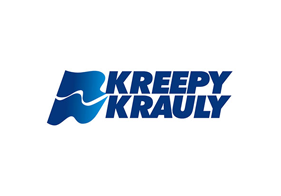Most of them won’t, however, state that proper GA4 configuration is where the real magic occurs.
It is not the standard installation that everyone uses simply because it is expected, but rather the advanced setup that provides insights into what is happening and enables you to take action.
Independent analytics audits and industry research show a disturbing trend..
The digital agency Perrill, which specialises in GA4 installations, describes “bad data” as “the single biggest issue” resulting from a poor setup. It notes that agencies often misinterpret their current analytics setup and believe one thing when the opposite is true based on how it has been configured.
Elsewhere, testimonials reveal that correctly configured GA4 installations are capable of reaching an accuracy level of approximately 95% for matching GA4 data with backend data, which is well above industry standard.
The difference between a good implementation and a bad one is not trivial. He said analytics pros always find that “a lot of businesses mess up” basic tracking because they fail to confirm “double-installed tracking codes” and “event tracking”, which results in incorrectly defining data that is being “counted twice, or split in two places”. That means agencies are optimising campaigns based on flawed data.
Having worked with hundreds of Perth businesses to get their analytics right (as well as having seen countless agencies stuff such information up royally), we’ve seen what separates the pros from the wannabes. It’s not about the most beautiful-looking dashboards — it’s about tracking the data that truly matter for your clients’ bottom line.
At SLINKY, we have repeatedly observed that agencies that focus on advanced event tracking, custom conversions, and proper attribution models consistently achieve better results for their clients compared to those that rely on out-of-the-box settings. It’s not just a technical difference; it’s a financial one.
Why Most GA4 Setups Fall Short
Standard GA4 installations are like having a Ferrari but only using first gear. Sure, you’ll get some data, but you’re missing the real performance indicators that drive business decisions.
Most digital agencies continue to approach GA4 as if it were a new version of Universal Analytics. That’s a mistake that costs their clients serious money. GA4 is event-driven, not session-based, which means the entire measurement philosophy has changed.
At SLINKY, our data analysts have spent the last two years perfecting GA4 configurations for everything from landscaping companies to law firms. What we’ve discovered might surprise you: the agencies getting the best results aren’t necessarily the biggest ones; they’re the ones who understand GA4’s true potential.
The Foundation: Enhanced Ecommerce Tracking
Let’s start by looking at some basics that are actually more intricate than they first appear. Fortunately, GA4’s enhanced e-commerce tracking differs significantly from GA3’s.
Instead of triggering events based on pageviews, you’re now tracking user behaviour throughout the customer journey. In other words, it’s charting the course for every interaction that someone has with your client’s business.
Here’s where most agencies screw up: they are quick to implement standard ecommerce events without understanding the sales funnel of their client. A bridal shop in Perth doesn’t have the same customer journey as a solar firm, yet far too many agencies implement the same setups again and again.
Pro tip: Most people won’t tell you this, but custom events should model actual business results, not mere technical achievements. Monitor quote requests, not just form completions. Also keep an eye on consultation appointments, not just contact page views.
Cross-Domain Tracking That Actually Works
There are plenty of tutorials on basic X-domain tracking, but they all miss the bits that catch agencies out working with complicated client setups.
When it comes to booking systems, payment processors, or third-party portals, which are prevalent in trades and professional services, regular cross-domain configuration can be restrictive. Here’s what typically goes wrong:
- Session fragmentation: Users are creating new sessions each between domains, so you can’t see full customer journey
- Attribution havoc: You lose first-click attribution as users jump from your client’s website to their booking platform
- Spiked bounce rates have had the worst of it: GA4 believes users are bouncing at the moment they are actually moving through the sales funnel
- Muddled user paths: Data reveals confusing user behaviour patterns due to insufficient domain jumping tracking!
- Revenue is misattributed: Conversions attributed to the wrong traffic source end up making your campaigns look less effective than they truly are.
It’s not as simple as throwing some domains in your GA4 configuration. Custom measurement protocols may preserve user identity across domains while not in violation of privacy constraints. It just needs an understanding of how different platforms deal with referrer information and cookie policy (which most agencies in the industry seem to have totally forgotten).
Too many agencies fail to monitor and test cross-domain tracking diligently, resulting in the loss of three months of reliable attribution data because they assume sharing cookies between sessions on different domains would “just work” with a standard implementation.
The reality? Successfully implementing this requires not only proper planning and testing but also a vigilant approach to ensure everything functions correctly.
Advanced Audience Configuration for B2B Clients
Here’s where GA4 really shines for agencies managing B2B accounts. The audience builder goes far beyond demographics and interests – it can identify prospects based on behavioural patterns that indicate purchase intent.
For our accountancy clients, we track users who visit service pages multiple times, download resources, and spend significant time on team pages. This creates a “high-intent prospect” audience that feeds directly into Google Ads campaigns.
However, the key point is that most agencies only utilise standard audiences. They miss the opportunity to create dynamic remarketing lists that adapt to users’ behaviours over time. Someone who downloads a tax guide in March has different needs than someone researching business structure in October.
Server-Side Tracking Implementation
At this point, you could easily outgrow other agencies that totally depend on client-side tracking. Now with even more privacy restrictions and ad blockers, server-side may not be optional — it may be a competitive advantage.
You can use the Measurement Protocol to send data from the server of the client directly into GA4 and, thus, not depend on browser limitations at all! This results in highly accurate data collection, improved attribution, and adherence to privacy laws.
Proper setup of the technology is essential, a task that many agencies choose to outsource or find challenging to fully grasp. However, you add significant value by guaranteeing 95% data accuracy, especially when your competitors struggle with only 60-70% accuracy due to blocked trackers.
Server-side tracking is not an effortless task. You should understand how to make HTTP requests, structure JSON data, authenticate, and work with APIs, among others. However, the return brought with it complexity, which is worth it in data quality.
Custom Conversions That Drive Revenue
Standard GA4 conversions (page views, form submissions, purchases) provide only a small piece of information. Agencies achieving significant results are those that track macro-conversions, which predict micro-conversions.
Ones that are for landscaping companies would be users viewing multiple project galleries, engaging with seasonal content, and spending time on maintenance service pages that correlate highly with project enquiries but aren’t captured by standard event tracking.
It’s all about knowing the sales cycle for each client and mapping the conversion events against it. A removalist company needs different tracking than a cosmetic surgeon… However, many companies rely on template approaches that overlook these nuances.
Game-changer: Implement conversion paths that mirror the actual business process of your client. If most consultations lead to proposals and most proposals lead to projects, track each of those as a meaningful conversion, not an all-or-nothing binary success.
Attribution Modelling for Multi-Channel Campaigns
While GA4’s attribution reports are impressive and powerful, they often lead to misunderstandings. Most agencies focus solely on the last click because they do not understand the complex, modern customer paths generated by current marketing strategies.
And when you’re running SEO campaigns in tandem with Google Ads and social media marketing (like we do for most Perth businesses), the need for an understanding of multi-touch attribution becomes critical. Organic search, social media influence, and a paid advertisement could have all contributed to the lead’s conversion in landscaping.
Attribution in GA4 is data-driven because it uses machine learning and assigns credit according to the actual conversion patterns, not some arbitrary rules. For this very reason, it requires a sufficient amount of data and the correct configuration of events to operate effectively.
Warning: Don’t trust attribution models until you have at least 400 conversions in your dataset. Below this threshold, stick with position-based attribution, giving first and last interactions their proper credit.
Integration with Google Ads and Search Console
This is where digital advertising agencies can truly benefit from an advanced GA4 setup. Proper integration unifies organic and paid performance, a feat most agencies struggle to achieve.
Connect GA4 to Google Ads for auto-tagging and importing conversion data directly into your campaigns. This enables optimisation using GA4’s advanced conversion tracking instead of Google Ads’ attribution alone. The search console suite injects query-level insights that change the SEO reporting game.
Instead of vanilla organic traffic reports, you’re able to report to clients exactly which search terms, by term and by stage in the funnel, are helping drive conversions. Insider tip: Use GA4’s audiences to build Custom Audiences in Google Ads using on-site activity.
Those users interacting with different content are often those with different search patterns and interested in different ad messaging.
Custom Reporting That Clients Actually Use
Standard GA4 reports are comprehensive but overwhelming for most business owners. The agencies providing real value are creating custom dashboards that focus on metrics that directly impact business decisions.
Our reports emphasise leading indicators over lagging ones. Instead of showing last month’s traffic, we highlight trends in consultation booking rates, service page engagement, and geographic reach – metrics that predict future revenue.
Critical insight: Most business owners don’t care about bounce rate or session duration unless you can tie them to business outcomes. Frame every metric in terms of customer acquisition cost, lifetime value, or conversion probability.
Privacy-First Configuration
As privacy regulations continue to tighten, and third-party cookies continue to disappear, agencies have to make sure they future-proof their GA4 implementation. This means understanding how consent management functions, the data retention policies in place, and how to integrate first-party data into your strategy.
Consent mode GA4’s Consent Mode, which also lets you measure even when users have denied cookies, fills in gaps in the data with modelled results. But execution requires a delicate balance between data accuracy and privacy compliance.
Future-proofing approach: centre measurement programmes for first-party data collection. Long-term tracking of email subscribers, account signups, and, of course, newsletter sign-ups is much more reliable than cookie-based systems.
Quality Assurance That Actually Works
That’s because most agencies install GA4 and cross their fingers. In a professional app, there would be full test suites for data accuracy before pushing live.
Use Google Analytics Debugger to keep an eye on events as they happen in real time. Compare GA4 with data from other analytics programmes to look for differences. Test cross-device and cross-browser conversion tracking to see where you are losing data.
Do this, too: Establish automatic alerts for data anomalies. If you see a sudden increase in traffic, there’s no conversion data, or you see a strange user behaviour pattern, it’s a clear sign that tracking is not working properly and you need to fix tracking immediately.
Common Pitfalls to Avoid
After setting up GA4 for hundreds of Perth businesses, we’ve seen the same errors again and again:
Inconsistent UTM parameters that mess up campaign attribution. Names for events that are not formed according to Google’s guidelines. Filters that accidentally remove crucial traffic segments. Cross-domain tracking that works sometimes.
The most significant error? The most significant error is assuming that GA4 functions similarly to Universal Analytics. Sessions are established, metrics are calculated, and user behaviour is monitored. Agencies that don’t change their strategy will leave clients perplexed and with inaccurate information.
Moving Forward with Confidence
Advanced GA4 setup is not a set-it-and-forget-it exercise – it’s an ongoing optimisation project that changes in line with your clients’ businesses and marketing efforts. Those agencies that are winning in a tough digital market in Perth are the ones that view analytics as a competitive advantage, not a necessary evil.
At SLINKY, we work, and we judge our work by results—we are obsessed with being data-driven. Our transparent reporting clearly shows clients how their digital marketing delivers business growth, supported by a sophisticated GA4 setup.
And, if your analytics stack is built to capture the full customer journey, from first touch to final conversion, such data doesn’t just make every marketing decision strategic (at its best, giving you an incalculable competitive advantage), it makes every campaign more effective and every client conversation more confident.
The question is not whether you need to start tracking in GA4, but whether you can afford not to. Because while your competitors are left in the dark about how campaigns are performing, YOU will have the data-driven knowledge to transform digital marketing from cost centre to profit centre.
Ready to take your analytics to the next level? Get in touch with SLINKY now and take advantage of an advanced GA4 installation, customised for digital marketing agencies.


























